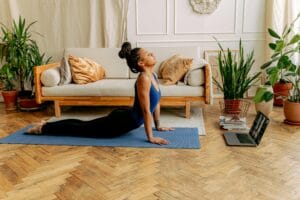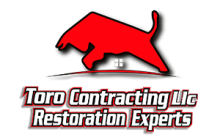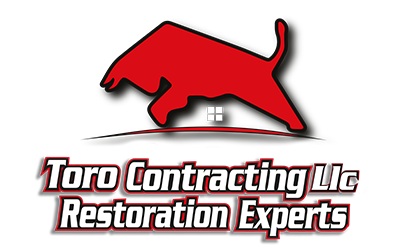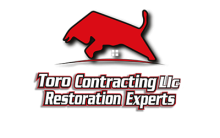Imagine walking into a home that instantly feels both modern and inviting, where every step you take connects you to the latest in design innovation. A few years ago, choosing the right flooring might have meant selecting between hardwood, tile, or carpet, but as we approach 2025, the world of flooring materials is evolving rapidly. Homeowners and designers alike are embracing new options that combine style, sustainability, and functionality in exciting ways. If you’ve been wondering how to give your space a fresh, contemporary look that stands the test of time, exploring the top floor materials trending for 2025 is the perfect place to start.
In this article, you’ll discover the 5 trending floors materials for 2025 homes that are capturing the attention of industry experts and design enthusiasts worldwide. From eco-friendly innovations to surprisingly durable alternatives, these materials offer versatility and aesthetic appeal that can transform any room. Whether you’re planning a full renovation or just considering an upgrade, understanding these emerging flooring trends will empower you to make choices that reflect your personal style while adding value to your home.
Read on to learn why these floor materials are making waves in 2025 and how you can incorporate them seamlessly into your living space, creating a foundation that’s as beautiful as it is functional.
Why Choosing the Right Floor Material for 2025 Homes Matters More Than Ever
When planning the perfect home renovation or new construction in 2025, one crucial decision often overlooked is the choice of floor material. “Trending floor materials for 2025 homes” is more than just a search phrase, it represents a seismic shift in how homeowners prioritize durability, aesthetics, sustainability, and comfort underfoot. Understanding this not only guides smarter purchasing decisions, but also impacts long-term satisfaction and property value.
Statistics also confirm this shift towards smart flooring choices. Market research indicates that the global eco-friendly flooring market is expected to grow at over 7% annually through 2027, highlighting increasing demand. Additionally, modern materials like luxury vinyl planks now boast waterproof and scratch-resistant technologies, making them perfect for busy families who don’t want to sacrifice style for durability.
In essence, staying informed about trending floor materials for 2025 homes is essential. It’s not just about picking what looks good today but investing in solutions that elevate home comfort, sustainability, and value for years to come. In the following sections, we’ll dive into the top five flooring materials defining 2025 living spaces, arming you with knowledge to make your next home’s floors truly stand out.
How to Choose and Apply Trending Floor Materials Step by Step for 2025 Homes
As 2025 approaches, homeowners are eager to revamp their living spaces with flooring that’s both trendy and functional. Choosing the right floor material is crucial not just for aesthetics but also for durability, maintenance, and overall home value. In this section, we’ll walk you through how to select and apply the trending floor materials for 2025 homes, step by step, ensuring your renovation is a stunning success.
Step 1: Understand Your Needs and Lifestyle
Before diving into the latest flooring trends, assess your household’s daily activities and requirements:
– High traffic or low traffic? Families with kids or pets need durable floors.
– Moisture concerns? Kitchens, bathrooms, and basements require water-resistant materials.
– Allergies? Opt for floors that do not trap dust or allergens.
– Aesthetic preferences? Decide between modern, rustic, or classic looks.
This initial evaluation will help you narrow down the 5 trending floor materials that best suit your lifestyle, such as engineered hardwood, luxury vinyl planks (LVP), bamboo, porcelain tiles, or polished concrete.
Step 2: Research the Trending Floor Materials of 2025
Next, dive into the top trending materials for 2025 and understand their characteristics:
- Engineered Hardwood
Offers the natural beauty of wood with enhanced stability and moisture resistance.
- Luxury Vinyl Planks (LVP)
Mimics wood, stone, and tile at a budget-friendly price, with high durability.
- Bamboo Flooring
Sustainable, eco-friendly, and visually striking.
- Porcelain Tiles
Available in diverse designs, highly durable and water-resistant.
- Polished Concrete
Industrial chic appeal, highly durable and easy to maintain.
Take the time to view samples in natural and artificial light to see how each material looks in your space.
Step 3: Set a Budget and Evaluate Cost vs Value
Floor materials vary widely in cost, so map out a realistic budget. Consider:
– Material expenses per square foot.
– Installation costs: Some floors like LVP are easier to install yourself, while others like hardwood need professionals.
– Maintenance and longevity: A cheaper material might cost more over time if it wears out quickly.
Step 4: Preparation Before Installation
Once you’ve selected your material, prepare your space properly to ensure flawless installation:
– Remove old flooring and clean the subfloor thoroughly.
– Check the subfloor condition. For example, concrete slabs must be leveled and moisture-tested for engineered hardwood or bamboo.
– Acclimatize the flooring material. Many wood-based floors require 48 to 72 hours in your home environment before installation to avoid buckling.
Step 5: Installation – DIY or Hire a Professional
Depending on the material and your DIY confidence, decide whether to install the floor yourself or hire a professional:
– DIY-friendly floors: Luxury vinyl planks often click together easily and can be installed over existing floors.
– Professional installation recommended: Engineered hardwood, bamboo, porcelain tiles, and polished concrete. These require special tools and experience.
Step 6: Post-Installation Care and Maintenance
To keep your new floor looking fresh for years:
– Engineered Hardwood: Use specific wood floor cleaners, avoid excess water.
– Luxury Vinyl Planks: Clean with gentle detergents, avoid abrasive scrubbing.
– Bamboo: Regular sweeping, occasional damp mopping.
– Porcelain Tiles: Grout maintenance is key; reseal grout if needed.
– Polished Concrete: Periodic resealing to maintain shine and prevent staining.
By following this step-by-step approach, you can effectively choose and apply one of the 5 trending floor materials for your 2025 home renovation. Remember to balance style, cost, and function to create floors that truly transform your living spaces into modern, durable sanctuaries.
Tips to Choose the Best Trending Floor Materials for 2025 Homes:
✅ Embrace Engineered Hardwood: Offers the classic warmth of wood but with superior durability and moisture resistance, perfect for busy households.
⚡ Opt for Luxury Vinyl Planks (LVP): Combining affordability and style, LVP mimics natural wood or stone and is highly durable and water-resistant.
🌿 Consider Bamboo Flooring: An eco-friendly choice that’s not only sustainable but also offers a unique grain and exceptional strength.
💎 Try Porcelain Tiles: Ideal for high-traffic areas, porcelain tiles provide a sleek, modern look and are easy to clean and maintain.
🌀 Explore Resin Floors: These seamless, customizable floors are gaining popularity for their contemporary aesthetics and versatility in design.
✅ Mix Materials for Contrast: Combining different flooring materials can create stunning visual interest and define separate zones in open-plan homes.
❌ Avoid Low-Quality Laminate: It may be cheap but often lacks durability and can negatively impact indoor air quality.
💡 Extra tip: Keep sustainability in mind, choose materials with low VOC emissions and that are recyclable or sourced responsibly to ensure a healthier home environment.
Key Concepts
When diving into the world of flooring materials, especially as we look ahead to 2025, it is essential to understand the foundational concepts that shape how these materials are chosen and appreciated. The selection of flooring goes beyond mere aesthetics, it intertwines with functionality, sustainability, and the evolving ways we inhabit our homes. Let’s explore some core ideas that underpin the trending flooring options for the modern home.
Durability: The Backbone of Flooring Choices
Imagine the floor as the relentless stage upon which daily life unfolds, steps, spills, shifting furniture, and the passage of time all test its resilience. Durability, then, becomes a central concept, determining how well a floor material withstands wear and tear over years. Materials like engineered hardwood or luxury vinyl plank exemplify this, marrying the beauty of traditional options with heightened toughness. Durability is not solely about resistance to damage; it also speaks to long-term maintenance ease and performance under specific household conditions. Understanding durability means grasping how a material’s composition interacts with the forces of life inside the home.
Sustainability: Flooring in Harmony with Nature
In recent times, floors are no longer silent bystanders in environmental conversations. Sustainability in flooring refers to the material’s ecological footprint, from sourcing raw materials to manufacturing processes and end-of-life recyclability. Think of it as choosing a path where the floor gently touches the earth rather than exhausting its resources. Bamboo flooring, for example, grows rapidly and regenerates quickly, making it a renewable option compared to traditional hardwood. Similarly, recycled materials, like reclaimed wood or eco-friendly composites, embody this concept by breathing new life into otherwise discarded resources. Sustainability thus acts as a moral compass guiding us toward conscious living spaces.
Comfort and Acoustics: The Sensory Experience Underfoot
Floors silently influence our everyday comfort and the overall mood of a room. This intangible quality relates to softness underfoot, warmth, and the way sound travels across a surface. Imagine walking barefoot over a plush cork floor versus a cold, hard tile. The sensation each imparts affects how inviting a space feels. Acoustic properties also play a crucial role, especially in multi-level homes or open-concept designs where noise control is vital. Materials with natural sound-dampening abilities, such as cork or high-density vinyl, create environments that soothe and protect privacy. This concept connects flooring choice to the full sensory experience within a home.
Style and Versatility: A Canvas for Personal Expression
Floors are more than utilitarian; they are a critical visual foundation for interior design. Style and versatility cover an array of characteristics, from color and texture to adaptability across diverse décor themes. Envision flooring as the blank canvas for decorating artistry, setting the tone for everything that sits above it. Trends in 2025 highlight materials that seamlessly blend classic appeal with modern innovation, offering rich grains or sleek, minimalist finishes. Moreover, versatile floors can transition across rooms with distinct purposes, sustaining aesthetic coherence while adapting to varying levels of foot traffic and moisture.
Technological Innovation: The Future Embedded in Materials
The concept of technological innovation in flooring captures the integration of advanced engineering and smart design. As homes become increasingly connected and high-tech, floors evolve beyond static surfaces. Materials embedded with antimicrobial properties, scratch resistance, or enhanced waterproofing reveal this trend. Think of flooring as evolving from a traditional necessity into a multifunctional asset, responsive, easy to maintain, and designed to improve quality of life. Incorporating nanotechnology or new composite formulas showcases how science and style fuse to meet future demands.
Environmental Adaptability: Floors that Live with the Climate
Every home lives within its environmental context, be it humidity, temperature fluctuations, or exposure to sunlight. Environmental adaptability is the material’s ability to respond and endure these external influences without degrading in beauty or performance. For example, ceramic tiles thrive in humid climates, resisting mold and warping, while certain engineered woods are designed to cope with changing moisture levels better than solid hardwood. This concept embraces a profound awareness that flooring must not only fit a lifestyle but also harmonize with nature’s rhythms, fostering durability and comfort.
Health and Indoor Air Quality: Safety Beneath Our Feet
Finally, an often-overlooked but increasingly vital concept is the impact of flooring on health and indoor air quality. Materials emit volatile organic compounds (VOCs) or other chemicals that can influence the wellbeing of occupants. Floors that are low-emission or naturally hypoallergenic contribute positively to a home’s overall air purity. Imagine flooring as a silent guardian, not only supporting your steps but also nurturing indoor environments that promote health and vitality. This dimension reflects the growing demand for healthy living spaces where every element, from walls to floors, works in tandem to safeguard those within.
Grasping these key concepts offers a richer understanding of the trending flooring materials for 2025 homes. Flooring is no longer a mere functional necessity, it is an evolving story of design, technology, environment, and human experience, all unfolding beneath our feet.

Frequently Asked Questions about 5 Trending Floor Materials for 2025 Homes
❓ What are the top 5 trending floor materials for 2025 homes?
The top 5 trending floor materials for 2025 homes include luxury vinyl planks, sustainable bamboo, polished concrete, engineered hardwood, and cork flooring. These options combine style, durability, and eco-friendliness.
❓ Why are sustainable materials gaining popularity in 2025 flooring trends?
Sustainable materials like bamboo and cork are popular because homeowners are increasingly environmentally conscious. These materials offer durability and a unique aesthetic while minimizing environmental impact.
❓ Are luxury vinyl planks suitable for high-traffic areas?
Yes, luxury vinyl planks are highly durable, water-resistant, and easy to maintain, making them ideal for high-traffic areas like kitchens and entryways in 2025 homes.
❓ How does polished concrete compare to traditional flooring?
Polished concrete provides a modern, sleek look and is extremely durable. It requires less maintenance than traditional flooring and is energy efficient due to its thermal mass, making it a popular choice for 2025 homes.
❓ Can engineered hardwood flooring be installed over existing floors?
Yes, engineered hardwood is designed with a plywood base, making it more stable and easier to install over existing floors compared to solid hardwood. This feature contributes to its rise in popularity for 2025 flooring trends.






